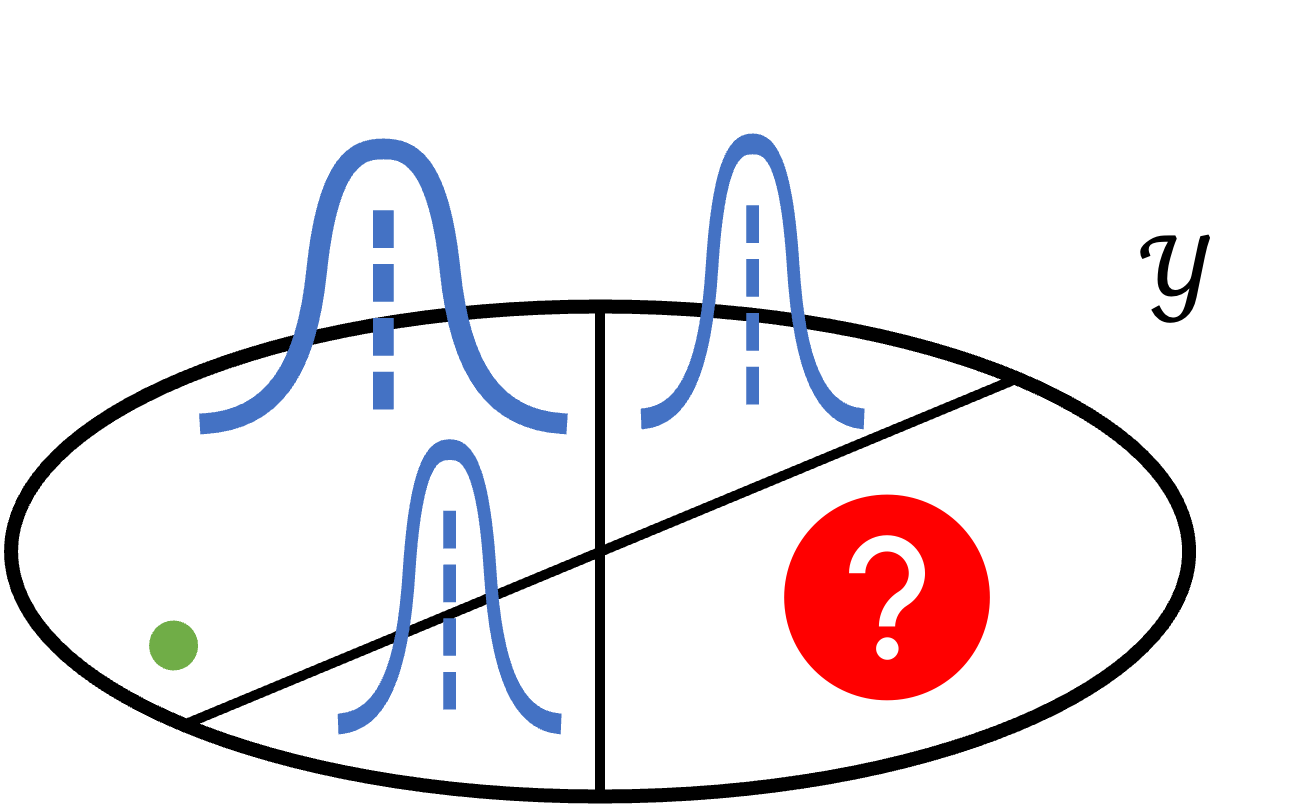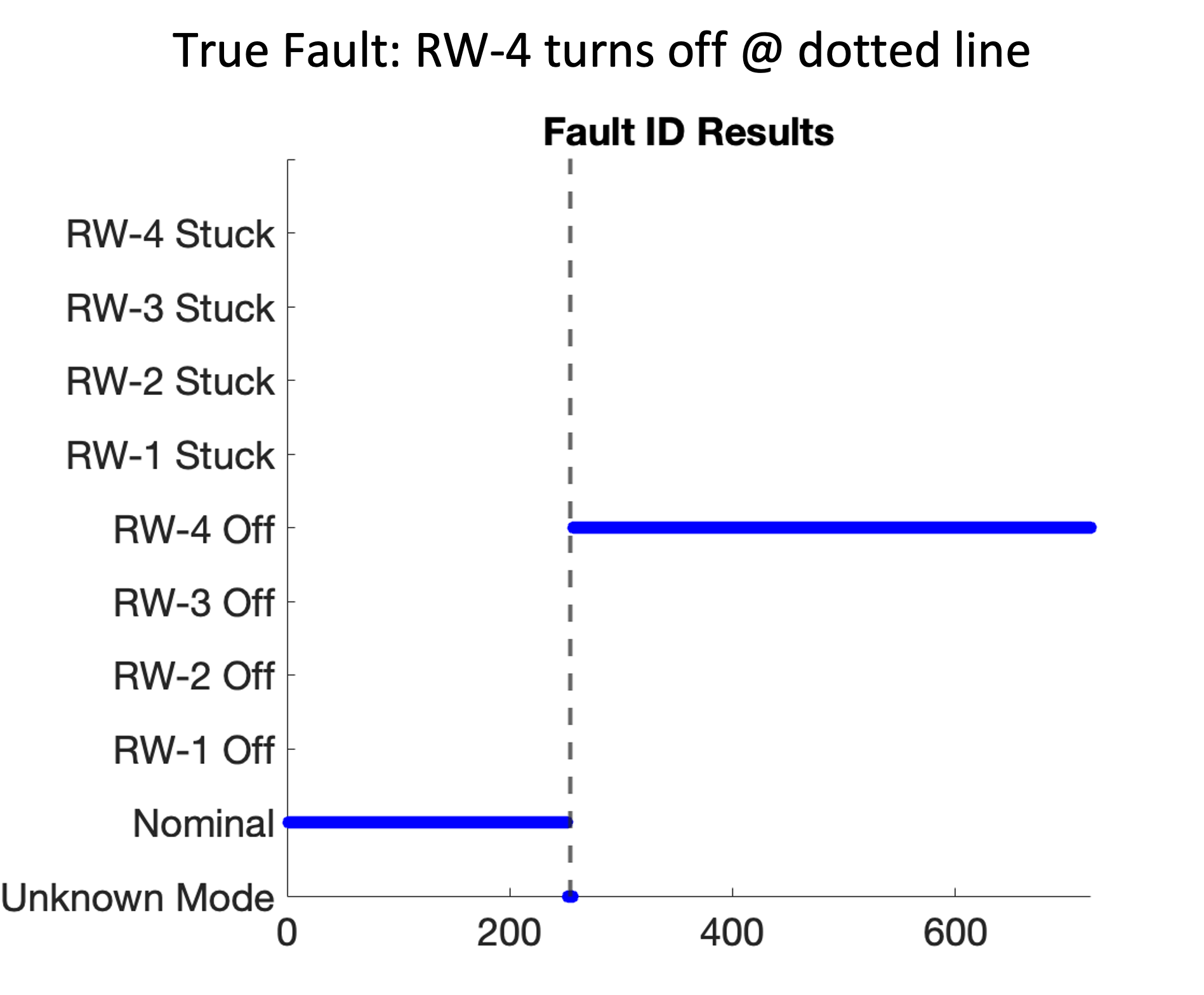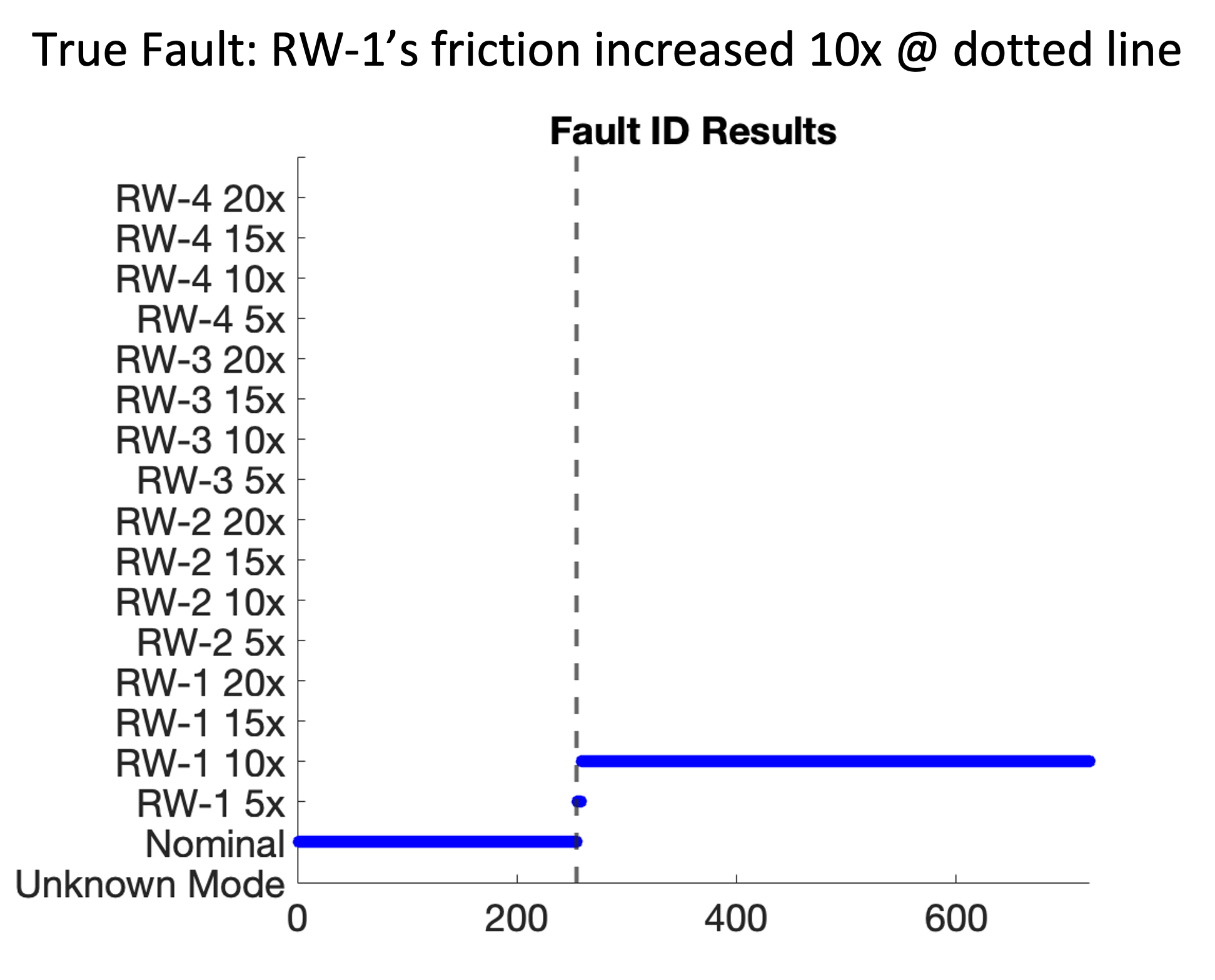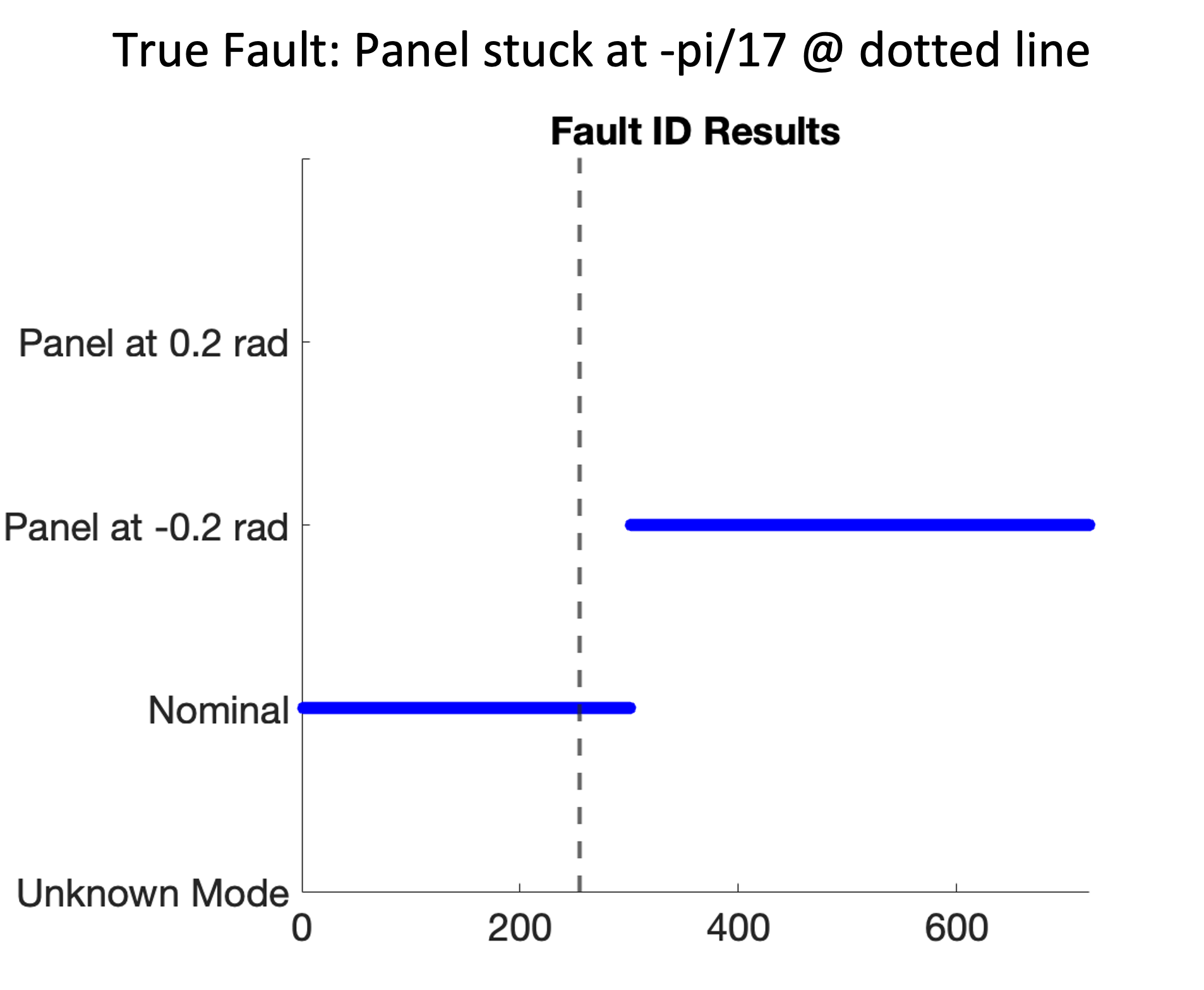Online Fault ID
We use M-ary Bayesian Hypothesis Testing to verify nominal system performance (or lack thereof) in real-time.
We developed a Model-Based Fault Identification (MBFID) algorithm that utilizes a technique called M-ary Bayesian Hypothesis Testing. Our MBFID framework requires telemetry data from a digital-twin capable of accurately simulating the real autonomous vehicle’s nominal telemetry and the effects of known faults. Given this, our MBFID framework can detect many different faults with over 95% success rate. Since this project was funded by the Air Force Research Laboratory (AFRL) in collaboration with Verus Research, the experiments and project evolution were spacecraft-specific. However, our methodologies remain generalizable to any dynamical system.


Intuitively, we run multiple estimators (e.g. a Kalman Filter) simultaneously, each one assuming (via the state and measurement equations) a particular operation mode/fault. Then, given a measurement from the real system, the M-ary Bayesian Hypothesis Testing framework creates an M-partition of the entire observation space and fits a posterior distribtuion given the measurement. Then, the tester can select the mode that the system is most likely in. We also can effectively identify unknown anomalies this way by recognizing when the system is most likely not in any modeled mode.
We have shown that that this method is very effective at identifying both known and unknown faults. Some examples are shown below.




I invite you to investigate any of these great resources to learn more about our work on this project:
- The implementation of the M-ary Bayesian Hypothesis Tester